| View previous topic :: View next topic |
| Author |
Message |
James Tate
Joined: 13 Nov 2020
Posts: 7
Location: Greer, SC


|
 Posted: Dec 06, 2020 22:55 Post subject: Re: Who can help me Posted: Dec 06, 2020 22:55 Post subject: Re: Who can help me |
|
|
Al,
I can certainly understand the difficulty and dangers of crossing borders around that region, and locating a crater structure or TSA (Target Surface Area) is not the most important thing. However, it's always a fun Google-Earth search. I spent an hour on it today, and yes...erosion makes it difficult for sure. There are so many variables to consider that are yet unknown.
Such as... a larger crater further away? Smaller crater close by? Angle/Direction of impact?
Good geo-detective work and lots of adventures locating more Proximal Ejecta Materials will lead you to it one day.
The most interesting impact-related samples will be in the form of Ejecta Deposits dispersed by the high-energy mechanism. The actual crater material (Breccias and Shatter Cones) near the Target Surface Area are interesting, but not as unique as the material ejected from it. The most interesting and important W.I.S. impact-related materials (my current project) exist 280km away from the actual impact crater in the form of an Impact Ejecta Pile that extends for 120km.
Now, for the bad news. An Academic Geo-Planetary Physicist would laugh us both out of the classroom with the evidence we currently have on hand. They rarely speculate and have very little imagination, when it comes to impact-related discoveries. There are still Ph.D.'s writing papers claiming Libyan Desert Glass was created by volcanoes. And why?...because no impact-related crater has been diagnostically confirmed.
The single most important evidence feature you can locate right now is not a "possible" impact crater. It's going to be Shock Metamorphism. This is considered to be one of the only visual forms of evidence accredited to diagnostic (proof) of asteroid/comet impact.
* Planar Deformation Features (PDF's) and Planar Fractures (PF's)
And, I'm willing to speculate based on what I've seen and heard so far...that you will find some. In fact...I'm positive that you will.
And, when you do? You can go to sleep that night "knowing" that you've got it.!
Al, I'm sure myself and others are very interested to see more material samples and are envious of your future adventures in the Libyan desert/mountain area. Please know I'm always happy to help in any way possible. I can't help but Include some reference photos of W.I.S. impact-related materials, to help your material search.
Your Friend,
James Tate
| Mineral: | W.I.S. Crater Rim Breccia |
| Description: |
| Small sample of WIS Crater Rim Breccia exhibiting smaller clasts of pulverized and melt-fused material. Note: most crater rim-breccia samples will exist as smaller fragments fused together very relative in size and distribution. * Any samples that resemble this composition will lead you closer to the target surface area. |
|
| Viewed: |
17240 Time(s) |
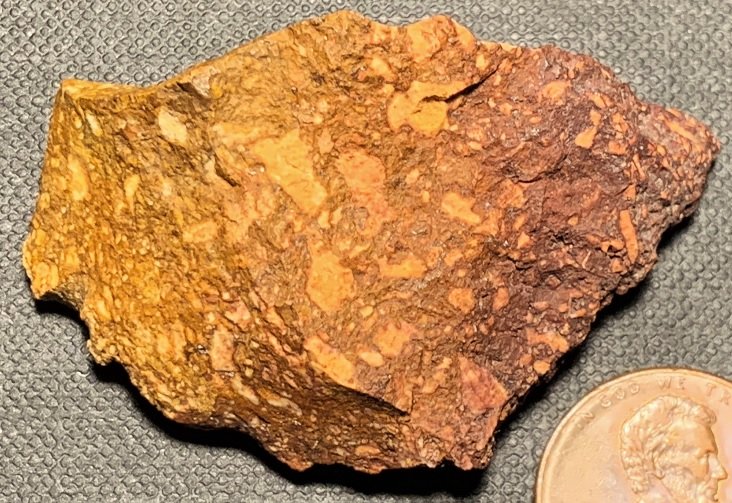
|
| Description: |
U.S. Western Interior Seaway
*This is an example of a unique impact-related breccia deposit formed by catastrophic deposition. Note: these breccia deposits can reach a vertical depth of 10m thick and extend for 120km. |
|
| Viewed: |
17209 Time(s) |
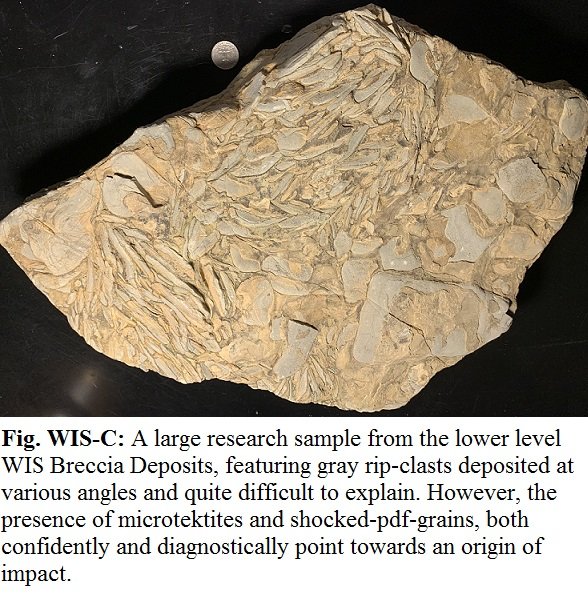
|
| Mineral: | Lower Level WIS Breccia |
| Description: |
U.S. Western Interior Seaway
* Shows an example of micro-tektites (melt particles) associated with high temperature impact-related materials. Locating these types of melt particles within your rock samples will heavily support an origin of impact. |
|
| Viewed: |
17200 Time(s) |
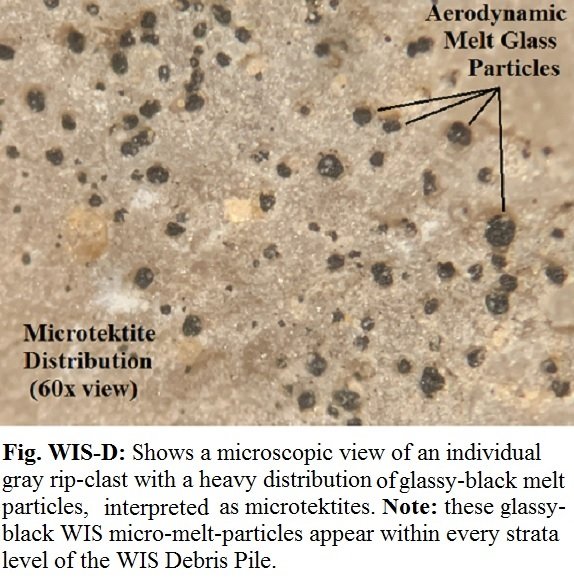
|
| Mineral: | Lower Level WIS Breccia |
| Description: |
U.S. Western Interior Seaway
* Example of the most important evidence feature you could possibly find, the existence of planar deformation features (PDF's) I'm quite sure that you will locate some impact-related rocks that share these features. |
|
| Viewed: |
17199 Time(s) |
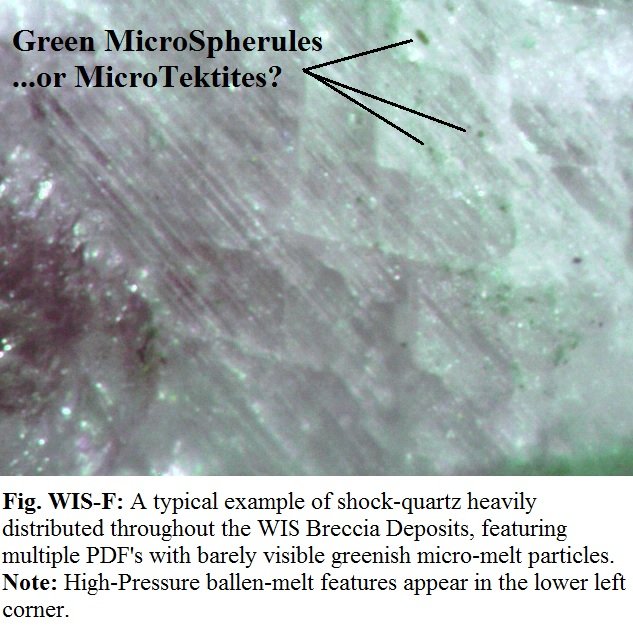
|
|
|
| Back to top |
|
 |
ALshawani
Joined: 08 Feb 2020
Posts: 38
Location: Africa


|
 Posted: Dec 07, 2020 15:51 Post subject: Re: Who can help me Posted: Dec 07, 2020 15:51 Post subject: Re: Who can help me |
|
|
HI
James Tate
I can only thank you for the follow-up and help. Yes, I think that the first and third samples met me a lot during my research and my tour of the desert ...
I will focus on these examples during my research and tell you all that is new
|
|
| Back to top |
|
 |
James Tate
Joined: 13 Nov 2020
Posts: 7
Location: Greer, SC


|
 Posted: Dec 07, 2020 15:53 Post subject: Re: Who can help me Posted: Dec 07, 2020 15:53 Post subject: Re: Who can help me |
|
|
I suppose that I found a connection with Al, picking up the first material sample and suspecting something strange and different about it. It's interesting that one specific "rock" that you pick up from the ground can change the direction of your life. That's exactly what happened to me 18 long years ago. I was 27 and had the equivalent knowledge of a 9th-grade high school geology student when I first noticed some strange objects poking out from an exposed ridge, located against the Rocky Mountains in the middle of nowhere.
I was exploring an old Native American cave structure when I first saw 3 brownish-tan objects with smooth rounded symmetrical curves embedded within a gray wall of rock.
Purely using common sense without specific knowledge of "concretions," the 3 objects all shared the same complicated shape and size.
What could replicate 3 complex symmetrical shapes and also be the exact same size?
My first and only answer was a fossil bone that replicates by a DNA pattern. And, like any regular person might, I assumed they must be dinosaur bones based on the obvious age of the ridge exposure. It's difficult to properly explain, but those 3 objects gave a distinct impression that they did not belong there. Meaning, they must have formed separately from the rock matrix and somehow deposited later.
Just like a dead dinosaur falling into a pit of mud and buried like any other fossils, I was thinking. However, that's when the mystery started and my life was changed forever.
I didn't notice just 3 of those objects protruding from a ridge face that day. I discovered "thousands" of them. The ridge face extended about 2 miles and these suspected bone fossils were found everywhere within a specific strata deposit layer 12ft tall and thick.
I was no paleontologist, but these facts made no sense to me. I was aware that fossil dinosaur bones from an individual creature could be dispersed from one another, but not thousands of fragments spread over 2 miles. The suspected bone fossil fragments were observed weathering and eroding out of the exposed ridge face, and therefore found strewn across the ground. I filled my pockets with small fragments within a matter of minutes and took them back to my campsite to study and contemplate them further.
I remember being very disappointed that night. I was excited for all of 5 minutes thinking and believing that I discovered some fossil dinosaur bones until I also found and discovered thousands of them that day. This fact would lead most intelligent people to dismiss the idea of bone fossils.
However, if they are not fossil bones...what can keep repeating a complex shape and size over, and over, and over again? That important question still remained.
*Imagine the complex symmetrical structure of an airplane wing. If you slice an airplane wing into 5 separate pieces, those 5 pieces are going to relatively appear the same. The same symmetrical curvature with the terminating points "always" exactly in the center density of the object. The same type of reoccurring pattern one would see if you sliced a rib-bone into 5 separate pieces.
These strange objects were very hard and showed no signs of weathering/erosion at all. They had the feel and hardness of fired porcelain glass. And then, I first noticed the next mysterious attribute of these material samples.
* Almost every piece of material had small "holes" on the surface area. It took me 3 days and 2 more explorations of the surrounding area to figure out the answer. One might be inclined to consider escaping gas vesicles, such as a volcanic-heat explanation.
However, I discovered that a specific hole located on one side of an object had a corresponding/matching hole on the other side as well. Meaning, something traveled "completely through" the object, thus creating an entry and exit crater.
This realization left only two possibilities of plausible explanation.
Were the holes caused and created by slow-moving ancient worms? (As studied within the field of Ichnology)
Or...
Were the holes caused by high-speed microparticles from an asteroid impact event?
On the night of June 6th, 2002 I first realized that I had found and discovered the first dinosaurs killed and blasted by an asteroid impact event.
10 minutes later...the strangest thing one can possibly imagine happened.
I walked into my tent located on a mountain ridge face 10,000+ feet above sea level, to grab a second cigarette, excited to further contemplate and theorize about the recent discovery. The sky was turning pitch black with more and more stars popping out. I decided to look up and search for the recently built International Space Station as I lit my cigarette. The ISS was supposed to one of the largest visible objects in the night sky. My field of view was 150+ miles at that altitude.
I spotted a bright white light in the far distance and my first impression was the object was moving, not matching with the "geosynchronous orbit" of the ISS.
I barely had time to register that thought. I watched this object streak across 150 miles in 2 seconds. The bright white light comes to a complete stop directly above me and just hangs there. I remember repeating "WTF is that?" about 3 times in a row before I could consciously decide to grab for my digital camera I had been recently using documenting the discovery site for future reference purposes. In fact, I had just used it 10 minutes earlier to snap some zoom angles of the bone fragments to better study the micro impact craters with better light.
I snapped a picture of the strange bright object. The moment I snapped that photo, the bright object vanishes from the current spatial location and reappears below where it once was.
How strange is that? Strange enough for me to attempt a zoomed-in closer photo, I can assure everyone. That's when my camera makes a sound that no camera was meant to make. A high-pitched squeal that tapers down to nothing and stops. My camera is dead and I'm worried about my precious photo getting erased and gone forever. The camera will not turn back on. I mean dead and nothing. I was naturally frustrated with this turn of events and became downright angry.
I remember the bright light just hanging above me in silence. It appeared to be still, but not quite. The object had a slight bounce about it and seemed to be slightly "floating" with gentle movements up and down.
I remember saying "Oh yeah?...watch this!" as I went to try more batteries for the camera. It's dark. I've got a bonified U.F.O. hanging over me that just disabled my camera. I'm screaming and yelling at it trying to figure out positive and negative directions to put 4 AA batteries in the camera. You can't make this stuff up.
So, I get the camera turned back on. The new batteries worked, which promotes many other extremely interesting questions regarding this strange encounter.
The same thing happens. A loud high-pitched whining sound and the camera is dead once again. Oh, this really Pizz'd me off.
I proceed to stare this object down, looking directly at it while shaking one fist in the air...
Shouting..."You're no GOD to me, mister!" At the moment, I decided to quote James T. Kirk right out of Star Trek, I kid you not.
So, what happens?
Well, I had 4 more batteries from a 12 pack. Why not? I loaded them in and the camera turns on once again.
But, this time? Apparently, the strange white light was also a little miffed by our mutual encounter, and my obstinance for attempting more photos of the object in question. Before I even lifted the camera into proper position, I feel a jolt of energy in my left hand that causes me to literally throw the camera down on the ground. It felt like I just stuck my whole hand into a 220-volt dryer socket. I had no choice, as it was an automatic physical response to the extreme energy involved.
So, as I'm staring up at this object feeling slightly defeated, The bright white object takes off with incredible speed at a 45-degree angle from which it arrived. This entire encounter takes place within a matter of several minutes. The white light was completely silent during each aspect of observation. It made no sound at all. And, it was gone.
While trying to wrap a rational explanation around this bazaar circumstance, I notice that two more lights are approaching me at high-speed from the same direction as the original U.F.O. traveled.
At this point, I'm ready to start building a pile of mashed potatoes. (Hint, Devil's Tower Wyoming)
However, the lights didn't travel nearly as fast but closely breaking the sound barrier. It was two U.S. Military Fighter Jets flying in formation, obviously chasing after and investigating whatever the strange white light was. Meaning, it was something that was captured on radar and they did not know what it was. The two jets took the same 45-degree turn angle and proceeded to follow the object.
That's the end of the W.I.S. bright white light encounter and the facts as I know them to be. Anything further...would be a complete speculation counselor.
I thought you would find this story/encounter fascinating Peter,
And yes, the original picture of the U.F.O. did remain on my camera. I always believe in backing up claims with some evidence.
"Extraordinary claims require extraordinary evidence," I believe Carl Sagan said that.
"Extraordinary evidence requires extraordinary observation," I said that.
Sincerely,
James Tate
| Mineral: | W.I.S. Hadrosaur Jaw Bone Fragment |
| Description: |
U.S. Western Interior Seaway
* The same suspected bone fragment I was examining on the night of June 6th, when I realized the "holes" on the surface were indeed created by high-speed micro particle impacts. Note: Compare the W.I.S. fragment sample to a verified referenced Hadrosaur jaw fossil (pictured below). |
|
| Viewed: |
17107 Time(s) |
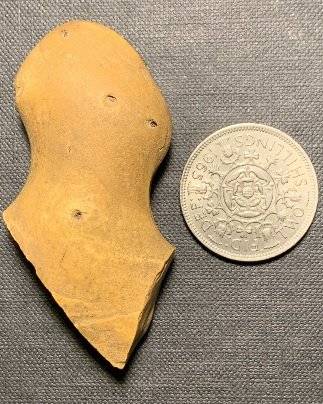
|
| Mineral: | Hadrosaur Jaw Section Reference |
| Description: |
Montana Reference Fossil
* Compare the upper fragment portion with the W.I.S. bone fragment sample. Both samples are the same size, complex shape, and exhibit the "exact" fracture pattern angles. Note: 25+ WIS fragments have been studied that exhibit the same complex repeating size and shape, suggesting a bone-fossil is the only plausible explanation. |
|
| Viewed: |
17098 Time(s) |
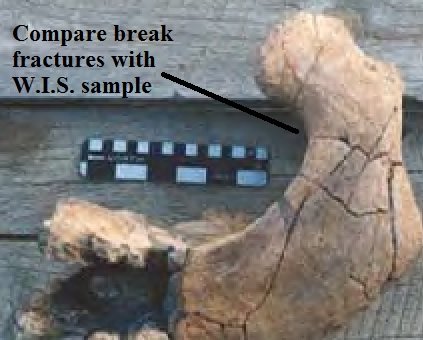
|
| Mineral: | W.I.S. Hadrosaur Jaw Bone Fragment |
| Description: |
U.S. Western Interior Seaway
* a side view of the WIS jaw fragment displaying complex symmetry, and evidence of high-speed entry/exit craters caused by high-speed particle impacts traveling completely through the object. . |
|
| Viewed: |
17166 Time(s) |
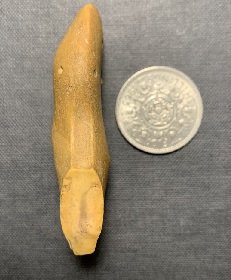
|
| Mineral: | Micro Impact Crater on WIS Bone Fragment |
| Description: |
U.S. Western Interior Seaway
* 20x view of micro-impact crater on surface of WIS Hadrosaur Jaw fragment. The haversian canal structure commonly identified within fossil bones can still be observed. Note: the melt-rim surrounding the target surface area. This micro impact crater was caused by a high-speed (Fe) particle, lining the impact shaft with melted-fused particles of Fe and many other exotic trace elements. |
|
| Viewed: |
17148 Time(s) |
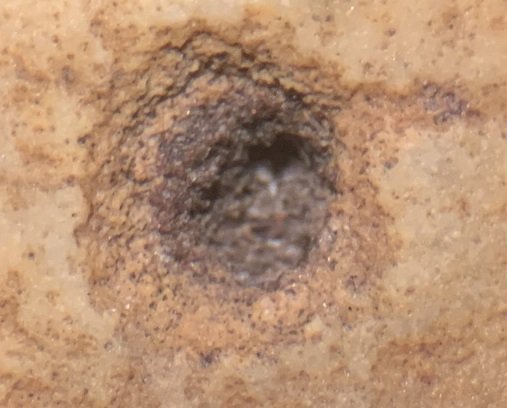
|
| Mineral: | WIS U.F.O. Photo (one and only) |
| Description: |
U.S. Western Interior Seaway
* This is the only photo the strange object would let me take. This event may not be the strangest U.F.O. encounter ever witnessed and recorded, however not many people can claim they've had a heated-argument-encounter with one. Note: The actual light captured in this photo completely changes depending on the "angle" you view it from. I've always considered that very strange as well. |
|
| Viewed: |
17120 Time(s) |
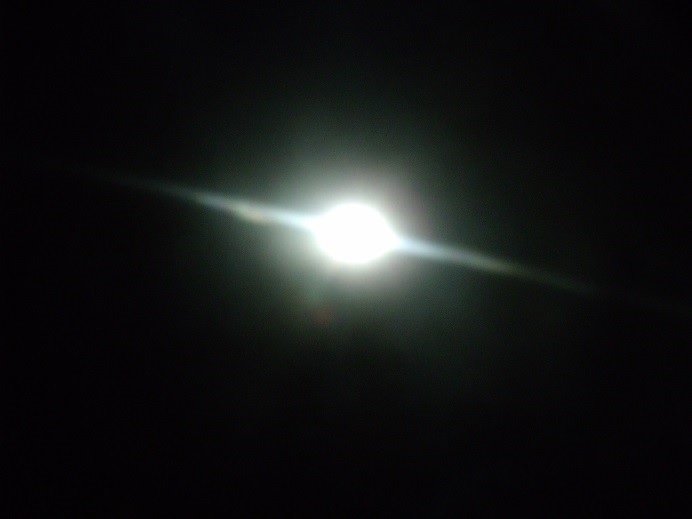
|
|
|
| Back to top |
|
 |
ALshawani
Joined: 08 Feb 2020
Posts: 38
Location: Africa


|
 Posted: Dec 10, 2020 05:15 Post subject: Re: Who can help me Posted: Dec 10, 2020 05:15 Post subject: Re: Who can help me |
|
|
Hello all
Yesterday, I headed southwest from the first place, about 30 kilometers away, and in a place like rocks, either fiery or tense with high heat, I found a strange formation that I could not distinguish whether it is mineral or organic
| Description: |
|
| Viewed: |
16937 Time(s) |
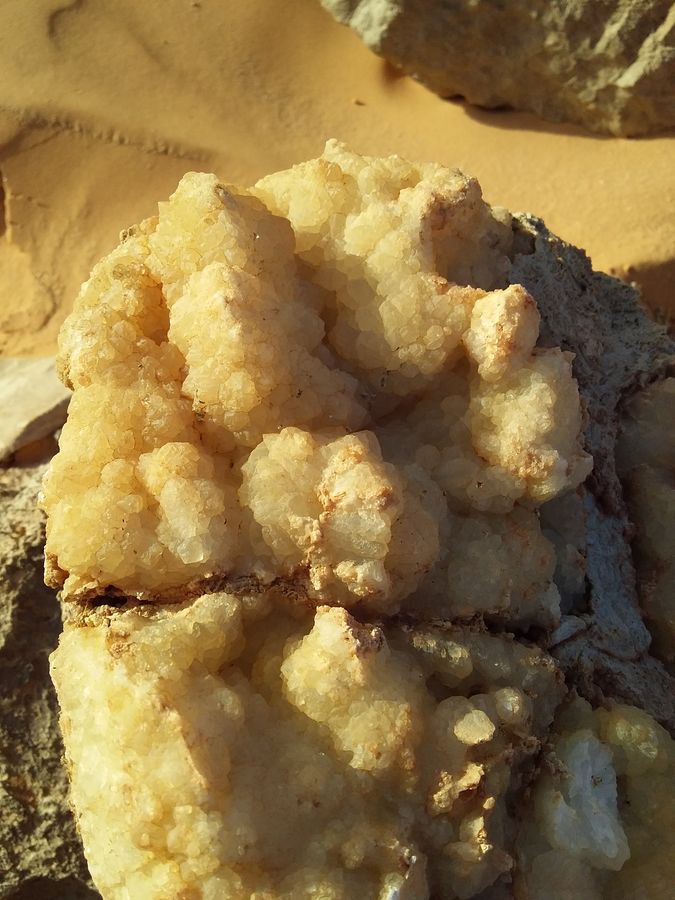
|
| Description: |
|
| Viewed: |
16909 Time(s) |
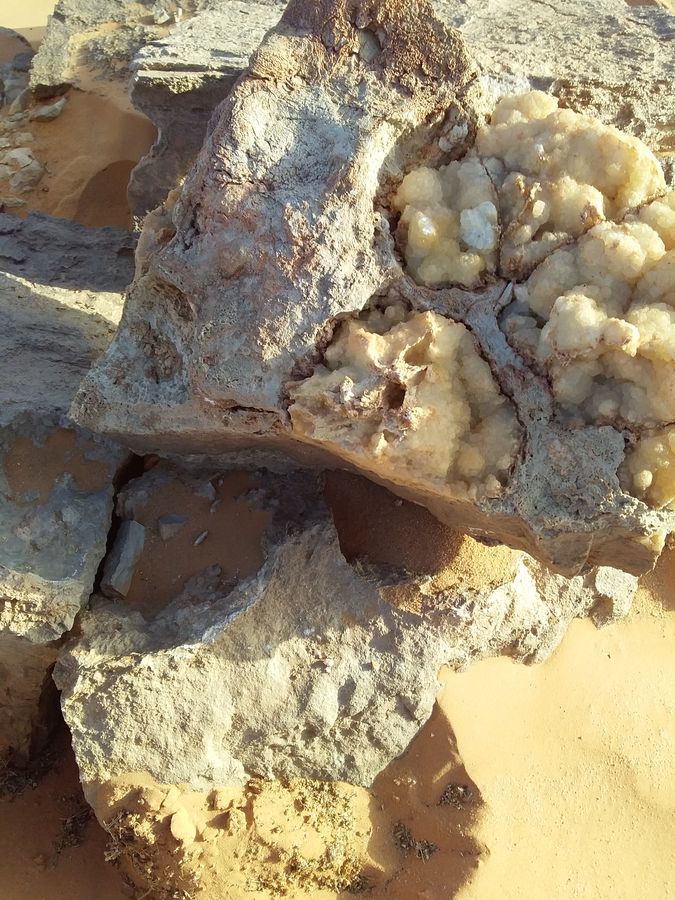
|
| Description: |
|
| Viewed: |
16870 Time(s) |
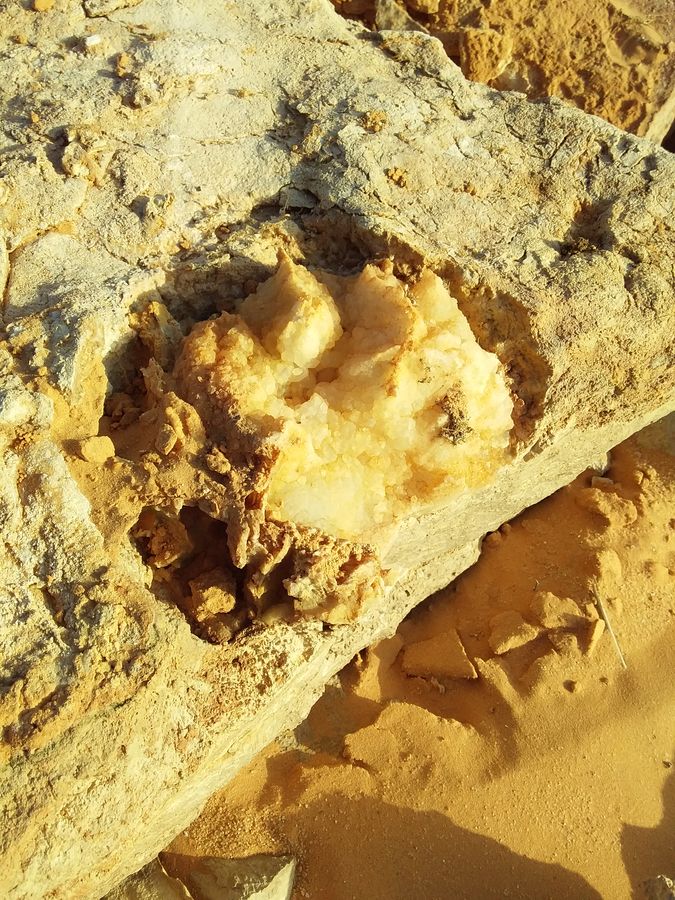
|
|
|
| Back to top |
|
 |
Firmo Espinar

Joined: 05 Apr 2017
Posts: 777
Location: Medellín, Colombia.



|
 Posted: Dec 10, 2020 05:59 Post subject: Re: Who can help me Posted: Dec 10, 2020 05:59 Post subject: Re: Who can help me |
|
|
Hi Al.
It seems to me may be Calcite.
|
|
| Back to top |
|
 |
Volkmar Stingl
Joined: 23 Sep 2012
Posts: 999
Location: Innsbruck



|
 Posted: Dec 10, 2020 09:41 Post subject: Re: Who can help me Posted: Dec 10, 2020 09:41 Post subject: Re: Who can help me |
|
|
| Does it fizz with hydrochloric acid? If yes, then calcite.
|
|
| Back to top |
|
 |
James Tate
Joined: 13 Nov 2020
Posts: 7
Location: Greer, SC


|
 Posted: Dec 11, 2020 11:16 Post subject: Re: Who can help me Posted: Dec 11, 2020 11:16 Post subject: Re: Who can help me |
|
|
Al,
Your new discoveries are very interesting, and once again share some similarities to samples recovered from the W.I.S. impact-related ejecta deposits. Man, I wish I could go exploring with you...it's not fair. That's where all the fun is.
I saw your samples yesterday but was stuck writing and sending emails with the academics, in regards to high-pressure phase diagrams of Iron-Oxides, such as Fe4O5.
No fun at all.
I believe one of your first inclinations are correct. These are likely marine organic fossil deposits of some type. And, likely involved within the suspected impact-event that took place near the location.
The upper levels of the W.I.S. Ejecta Deposits exhibit similar material that I could not initially explain. The material samples appeared to be a type of heat-related melt glass with pockets of sparkling crystals.
Knowing that larger impact events can produce a highly-ionized cloud of vapor and melt products, I assumed these specific samples might possibly be the result of that process. Very similar to a "fulgurite" caused by a lightning strike.
However, more study and investigation showed that W.I.S. marine fossils connected with the event-deposits shared a similar composition feature. Thus, likely explaining that these specific material samples must have been organic-material in nature at the time of impact and deposition.
*Always remember to grab some material samples for future reference and study. Especially the gray rock matrix that houses these interesting crystallized samples. You never know what micro-particles and fossil evidence may be hiding from the naked eye.
As always, I'll let you compare some of the W.I.S. material samples, and hope that it might help your investigation and research.
*I'm also curious regarding any Iron (Fe) related samples that you may find in the area. I've been studying some ancient Egyptian (Fe) beads found in a 5,000-year-old tomb, with academics being confident these (Gerzeh Beads) were created by a meteor impact event. This also suggests they could be connected with the mysterious Libyan Desert Glass that exhibit (Fe) particles in many samples.
Strange (Fe) material is also being located around the Farafra Oasis area of Egypt. These (Fe) samples were first classified as hematite but recently changed to marcasite. They have a strange snowflake-like crystallized appearance and could very possibly have been formed from the pressures and heat of an impact-event-process. An origin that a regular geologist would rarely or never consider.
Again...I wish I could be out there exploring this material with you. Let's get more into these "burning rocks" that you mention, and discuss more examples of impact melt glass characteristics, such as high-levels of pure silicon dioxide (Sio2), referred to as Lechatelierite.
Your Friend,
James Tate
| Mineral: | Upper Level Melt-Fossil Products |
| Description: |
Locality: U.S. Western Interior Seaway
Impact-related material found within a sandstone-like deposit of catastrophic deposition. The composition appears as a type of pitted-fused-glass with pockets of sparking crystals. Note: Pockets of the original non-melted rock matrix exhibit a transitional melt-phase with outer edges fusing with the object sample. |
|
| Viewed: |
11442 Time(s) |
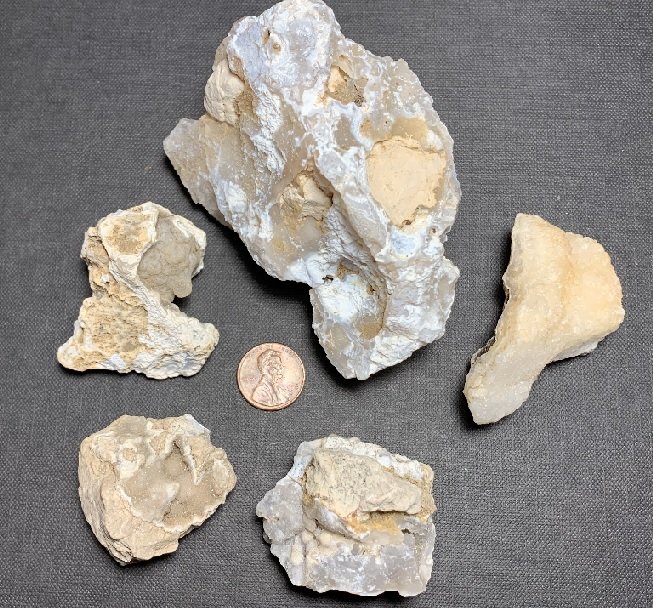
|
| Mineral: | WIS Horned Coral Fossil Samples |
| Description: |
Locality: U.S. Western Interior Seaway
Horned Coral Fossil samples recovered from the upper-levels of the WIS Ejecta Deposits. These fossil samples exhibit the same composition features as the material (pictured above). This would suggest that all material exhibiting this specific pitted-melt-fused structure was once a type of organic living organism during the time of the impact event. Note: Horned Coral Fossils were a common marine organism located within the ancient U.S. Western Interior Seaway, and went extinct during the KT Extinction Event (66mya). |
|
| Viewed: |
11490 Time(s) |
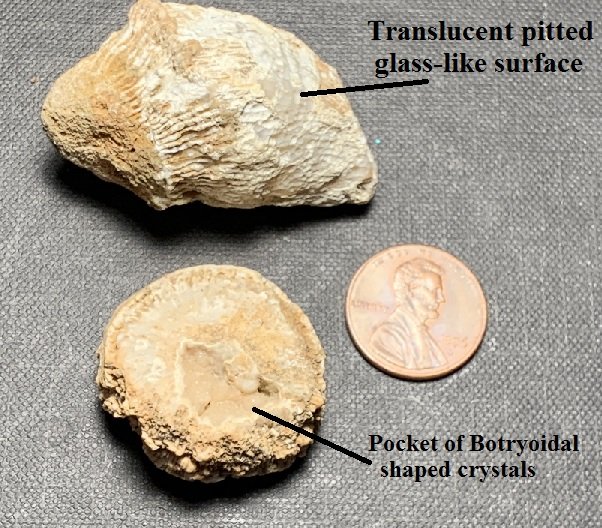
|
| Mineral: | WIS Material Sample |
| Description: |
Locality: U.S. Western Interior Seaway
Displays a closer view of WIS sample (pictured above) showing glass-like crystal growth. This sample is very similar to the possible marine-organic-materials you recently located in the western-desert area. The crystal growth obviously and likely occurred after the impact process, but still displays strange features of possible toasted-melt and deformation. These material samples have always presented problems with absolutes and solid explanations. |
|
| Viewed: |
11455 Time(s) |
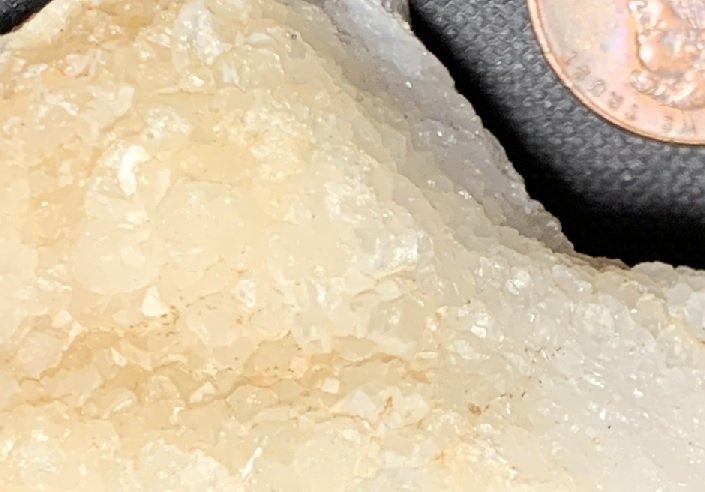
|
| Mineral: | Upper-Level WIS Material |
| Description: |
Locality: U.S. Western Interior Seaway
Displays a 60x view of clear glass-like crystals. These crystals exhibit obvious planar fractures, and what I believe to be "deformation twinning." Note: Existing crystals that are "shocked" by high-pressures during an impact event would be considered as "planar deformation features," or PDF's. However, the sample shown here would be considered as :deformation twinning," A crystal product formed "after" the extreme high-pressure-temperature energy event. |
|
| Viewed: |
11432 Time(s) |
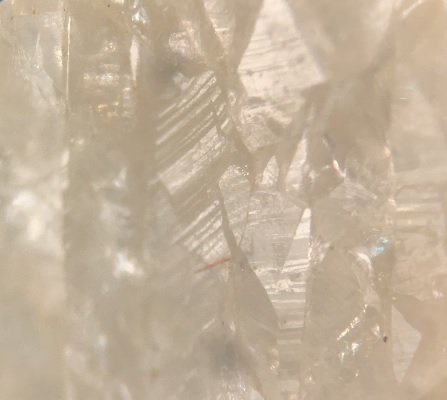
|
| Mineral: | Upper Level WIS Deformation Twins |
| Description: |
Locality: U.S. Western Interior Seaway
Another 60x view of suspected Deformation Twins. Note: The actual mineral composition of this material has not yet been identified, but shows a hardness factor around 7 on the scale. |
|
| Viewed: |
11424 Time(s) |
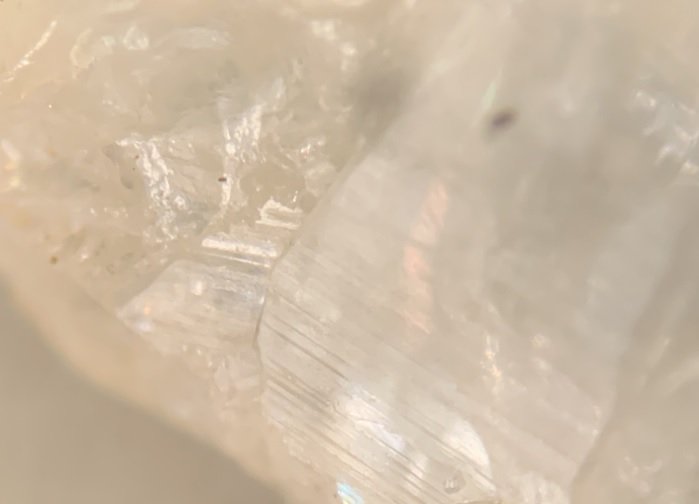
|
|
|
| Back to top |
|
 |
ALshawani
Joined: 08 Feb 2020
Posts: 38
Location: Africa


|
 Posted: Dec 11, 2020 15:50 Post subject: Re: Who can help me Posted: Dec 11, 2020 15:50 Post subject: Re: Who can help me |
|
|
| James Tate wrote: | Al,
Your new discoveries are very interesting, and once again share some similarities to samples recovered from the W.I.S. impact-related ejecta deposits. Man, I wish I could go exploring with you...it's not fair. That's where all the fun is.
I saw your samples yesterday but was stuck writing and sending emails with the academics, in regards to high-pressure phase diagrams of Iron-Oxides, such as Fe4O5.
No fun at all.
I believe one of your first inclinations are correct. These are likely marine organic fossil deposits of some type. And, likely involved within the suspected impact-event that took place near the location.
The upper levels of the W.I.S. Ejecta Deposits exhibit similar material that I could not initially explain. The material samples appeared to be a type of heat-related melt glass with pockets of sparkling crystals.
Knowing that larger impact events can produce a highly-ionized cloud of vapor and melt products, I assumed these specific samples might possibly be the result of that process. Very similar to a "fulgurite" caused by a lightning strike.
However, more study and investigation showed that W.I.S. marine fossils connected with the event-deposits shared a similar composition feature. Thus, likely explaining that these specific material samples must have been organic-material in nature at the time of impact and deposition.
*Always remember to grab some material samples for future reference and study. Especially the gray rock matrix that houses these interesting crystallized samples. You never know what micro-particles and fossil evidence may be hiding from the naked eye.
As always, I'll let you compare some of the W.I.S. material samples, and hope that it might help your investigation and research.
*I'm also curious regarding any Iron (Fe) related samples that you may find in the area. I've been studying some ancient Egyptian (Fe) beads found in a 5,000-year-old tomb, with academics being confident these (Gerzeh Beads) were created by a meteor impact event. This also suggests they could be connected with the mysterious Libyan Desert Glass that exhibit (Fe) particles in many samples.
Strange (Fe) material is also being located around the Farafra Oasis area of Egypt. These (Fe) samples were first classified as hematite but recently changed to marcasite. They have a strange snowflake-like crystallized appearance and could very possibly have been formed from the pressures and heat of an impact-event-process. An origin that a regular geologist would rarely or never consider.
Again...I wish I could be out there exploring this material with you. Let's get more into these "burning rocks" that you mention, and discuss more examples of impact melt glass characteristics, such as high-levels of pure silicon dioxide (Sio2), referred to as Lechatelierite.
Your Friend,
James Tate |
Okay Professor James
I'll show you some pictures that are close to the pictures I thought
| Description: |
|
| Viewed: |
11422 Time(s) |
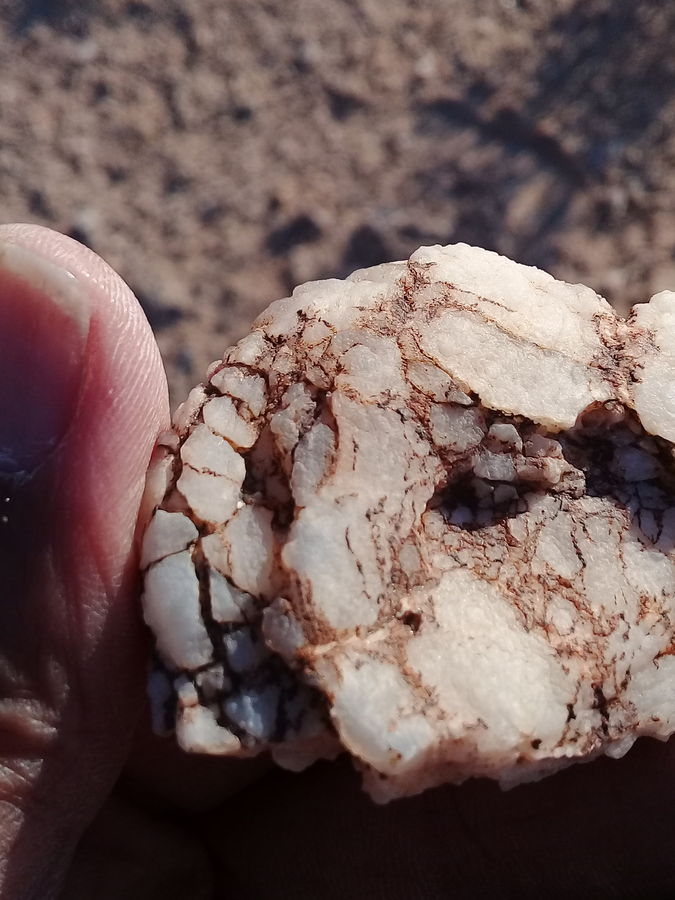
|
| Description: |
|
| Viewed: |
11411 Time(s) |
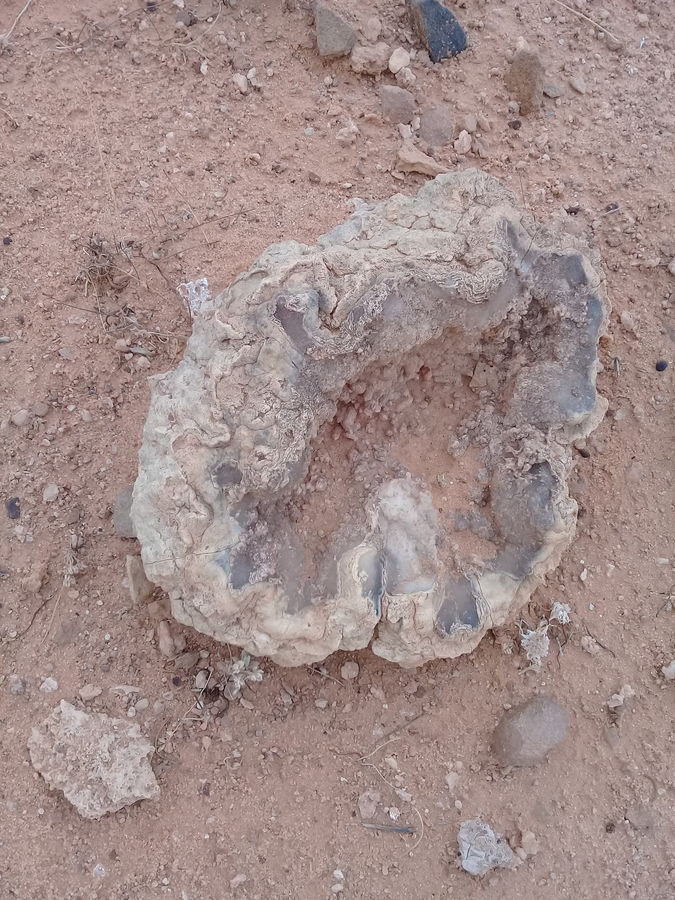
|
| Description: |
|
| Viewed: |
11393 Time(s) |
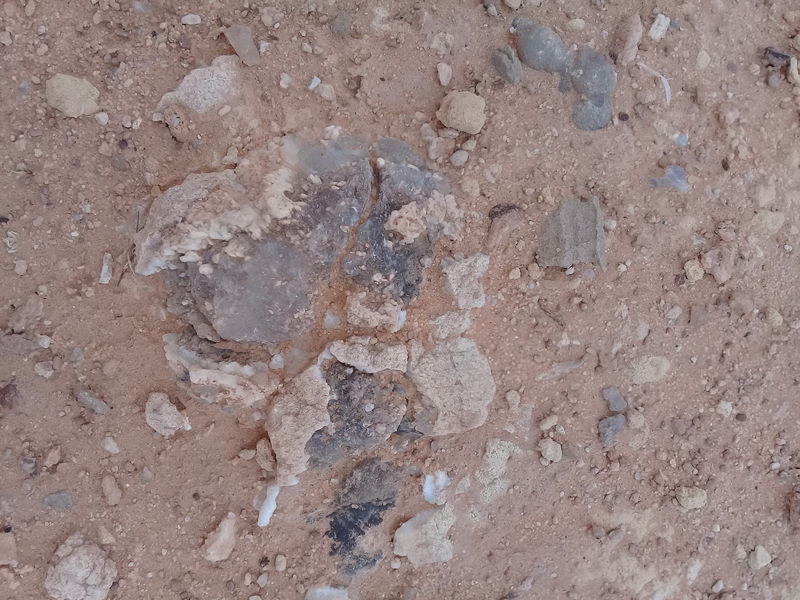
|
| Description: |
|
| Viewed: |
11440 Time(s) |
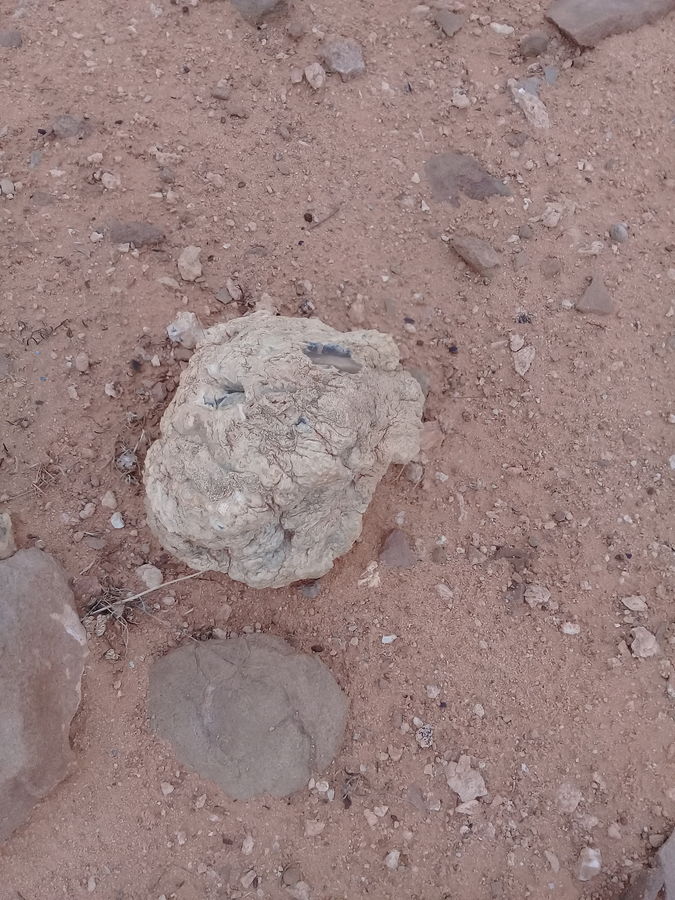
|
|
|
| Back to top |
|
 |
Volkmar Stingl
Joined: 23 Sep 2012
Posts: 999
Location: Innsbruck



|
 Posted: Dec 12, 2020 01:14 Post subject: Re: Who can help me Posted: Dec 12, 2020 01:14 Post subject: Re: Who can help me |
|
|
| Sorry, but I cannot see ANY impact-related feature up to now in your Libyan rocks. I see only chert (flint) concretions with some quartz crystals in hollows, and on the other hand calcite ...
|
|
| Back to top |
|
 |
Vinoterapia
Joined: 03 Feb 2009
Posts: 181
Location: Houston, Tx



|
 Posted: Dec 12, 2020 11:10 Post subject: Re: Who can help me Posted: Dec 12, 2020 11:10 Post subject: Re: Who can help me |
|
|
As I mentioned earlier in the post, and concurring with Mr. Stingl opinion, I believe that your samples are mostly chert concretions and some calcite crystals.
Making identifications by photographs are always tricky. I will suggest that you take some of your samples to a Geology school in your region. I am sure that you will find somebody to help you out with a proper identification.
To Mr.Tate:
I do not want to be impolite, but I am somewhat skeptic of your depiction of the "W.I.S." meteorite. I have been unable to find any information of such an event by searching the Internet, so my questions are:
Is this impact event recognized by some other name, when and where it occurred?
Is there a peer reviewed paper where we can find descriptions and analysis of the samples that you mention?
|
|
| Back to top |
|
 |
James Tate
Joined: 13 Nov 2020
Posts: 7
Location: Greer, SC


|
 Posted: Dec 12, 2020 14:11 Post subject: Re: Who can help me Posted: Dec 12, 2020 14:11 Post subject: Re: Who can help me |
|
|
To Mr. Stingl and Vinoterapia,
Let me first say, that I completely understand your skepticism and personal perspectives involved within the scope of issues you are currently reading about. No need to “apologize,” or seem “impolite.”
I warned Al about the “academic community” and folks like yourself a few posts ago. Meaning, that to establish “sufficient proof” of asteroid impact-related materials is quite difficult and very unlikely for professionals and enthusiasts, as the both of you to accept. That is the nature of scientific recognition/acceptance and we can all trace that concept back to hundreds of years and thousands of debates within the different fields of scientific exploration.
That is likely the “one” thing we can all agree upon. Well, I am also guessing that both of you do not believe in a flat-earth theory? So, that makes two things at least.
Mr. Stingl offered his opinions/observations pertaining to the Libyan-Desert “suspected” impact-related evidence on hand and declared he was not convinced. Of which, I again warned Al that this would most likely be the case until more specific diagnostic-evidence-features of impact were recovered, properly studied, and interpreted correctly. As for proper scientific investigative principles and the concept of proving “extraordinary” discoveries, no clear and evident fault can be brought upon Mr. Stingl. He made no mention and offered not one observational-opinion based on the material evidence characteristics of the W.I.S. impact-related discovery I conveyed during my posts. This marks the specific individual as a hard-core “show me the evidence” scientific enthusiast. And you are to be commended for such rationalization. Meaning, the world in which you observe, is most likely the way it truly is.
Now, let us get into the conceptual understanding of what Mr. Vinoterapia had to say.
This individual also agrees the evidence of impact-related materials in the Libyan-Desert area are lacking sufficient proof and remains sincerely unconvinced. Again, I have already stated that more evidence is needed to fully establish that principle. However, I feel these two individuals do not quite grasp the “concept” of theory and exploration.
Meaning, the communication between Al and myself is embarking on the “attempt” and “possibility” to find impact-related materials to eventually “establish” something rare and truly valuable/important. This exchange is not meant to “prove” anything at the current moment. This exchange of information is meant to “explore” theories, possibilities, and both learn new information/data from the process.
Can everyone understand that?
It requires a myriad of data exchange and research to present and offer what both you, and many others demand. We are currently in the “process” of that exchange pertaining to the Libyan-Desert material. Maybe it is something. Maybe it is nothing. That is really the true question at hand, regarding Al’s Libyan-Area material.
Now, regarding what you had to say about the W.I.S. impact-related material.
You exclaimed that you are “skeptical,” which is fine. But why?
Because you searched the internet and found nothing supporting the impact-related nature of the discovery?
Because no “accredited” academic peer review process has been performed?
This is true. There is nothing. You will not find one single thing about it.
The W.I.S. impact-related discovery site is my own personal/private scientific research project.
Did the multiple-evidence-features and data I conveyed regarding the W.I.S. impact-related site not convince or sway your judgment about it?
These are profoundly important questions.
Meaning, I am curious what it would require to fully convince you (and many others I’m sure) of an impact-related discovery.
And please know...I do not wish to be “impolite.” However...
Are you capable of observing the specific diagnostic evidence features of impact-related materials and crater-morphology/locations, based on your own knowledge and conclusions?
Or...
Does it require a Ph.D. and peer review process by a collective audience to suggest and inform you of such?
These are legitimate questions, and I would be very curious regarding your answer.
Sincerely,
James Tate
|
|
| Back to top |
|
 |
Jordi Fabre
Overall coordinator of the Forum

Joined: 07 Aug 2006
Posts: 5071
Location: Barcelona



|
|
| Back to top |
|
 |
|





